Image Credit: ASHRAE
It’s been a while since I’ve written about what I had been calling “The Great Ventilation Debate” back when Joe Lstiburek was battling the ASHRAE 62.2 residential ventilation committee. The 62.2 committee meets in person twice a year at the two ASHRAE conferences, and they just met last Friday and Saturday in Houston, Texas.
A few things have happened over the past few years, so let me give you a brief update.
Ventilation rates
Back in 2013 when Dr. Lstiburek introduced what he called his ventilation standard, BSC-01, the 62.2 committee had just removed the default infiltration credit for homes, which resulted in higher ventilation for most new homes that had to meet strict airtightness codes. Lstiburek’s rates were based on the 2010 version of the 62.2 standard, with credits for reducing the rates further for ventilation systems that were balanced, distributed, and mixed.
After the big debate at the 2014 Affordable Comfort conference in Detroit, Lstiburek rejoined the 62.2 committee. In 2015, they had proposals to adopt something very similar to BSC-01, but they didn’t pass. The following year, a new proposal to lower the ventilation rates (but not as much) in the 62.2 standard was voted on, and it, too, failed.
So the rates specified in the 62.2 standard are pretty much the same as they’ve been since the 2013 version of the standard dropped the default infiltration credit. A home needs 7.5 cfm per person (with number of people defined as number of bedrooms plus one) and 3 cfm per 100 square feet of conditioned floor area. That’s the total. The amount you have to add can be less if you do a blower door test and take the infiltration credit (not to be confused with the default infiltration credit mentioned above).
Ventilation in the International Residential Code
Where things have gotten interesting is that the International Code Council has been taking a different path. The 2018 International Residential Code adopted a ventilation rate requirement that’s essentially the same as the 2010 version of the 62.2 standard:
(7.5 cfm/person) + (1 cfm/100 sf)
The 2021 version goes a step further in the direction of Lstiburek’s BSC-01. They’ve agreed to allow balanced ventilation systems (where the amount of air exhausted and the amount of air introduced balance each other out) to operate at 30% lower than the rate you’d get from the equation above.
Unvented gas heaters
The issue of unvented gas space heaters was added to the scope of the standard with the 2013 version. Every meeting since then has included time wasted on… errr, I mean, has had lots of discussion of what, if anything, to do about these appliances. The industry folks come and make their case. They have some friends on the committee who support them. The committee came close in 2016 to approving a motion that would have said that a house with unvented gas appliances cannot be in compliance with the standard.
The meeting in Houston didn’t really have much discussion about unvented gas appliances. The industry folks are trying to get ASHRAE to fund a study of the emissions from these devices, but several committee members I spoke with are opposed to that because the industry already has data that they won’t release.
I believe that the committee has taken one action, though. There’s a nearly-approved addendum that requires extra ventilation if unvented gas appliances are present unless the volume of air in a house is above a certain threshold. I’m not on the committee and haven’t seen the addendum, but one committee member told me that the new requirement will tie the heating capacity allowed to the volume of air inside the house. If I recall correctly, he said the formula will result in no unvented gas heaters in houses less than about 5,000 square feet.
Filtration credit
Another issue they’ve been working on for the past several years is a credit to allow reduction of the ventilation rate if a house meets some filtration criteria. The idea is that by filtering the air more you won’t need as much outdoor air to remove or dilute the contaminants. It’s a great idea in theory, but they’ve had guests come to the past two meetings and point out some of the problems with doing this.
Most recently, Professor Jeff Siegel, an indoor air quality researcher from the University of Toronto, gave a presentation at the Houston meeting about filtration efficiency and ended with a word of caution. A filter credit, he said, could work only with a performance-based approach and with consumer education about filter installation and changing. Without these measures, extra filtration with less ventilation could lead to worse indoor air quality. We’ll have to wait and see if this idea goes anywhere.
ASHRAE and the real world
It’s a rare meeting when there’s not some kind of problem with the ventilation or heating and cooling at the ASHRAE conference venues. In Orlando a couple of years ago, the room was small, crowded, and stuffy. I wish I’d had a carbon dioxide monitor because I’m sure it must have been at least two thousand parts per million. (Experts recommend that it stay below one thousand ppm.)
And then there was Las Vegas last year. There aren’t many places — at least not in North America — where you can smoke indoors, but Caesar’s Palace in Las Vegas is one them. They don’t let you smoke in the meeting rooms, but still, you can’t walk through the building without accidentally smoking a cigarette or two.
This summer, the conference is in Houston, just a few miles from where I was born. It’s the land of humidity, as you know all too well if you’ve been here in the summer (which usually lasts about six months). And that gets us to the photo reproduced as Image #2, below.
Kimberly Llewellyn (with Mitsubishi Electric), standing next to the grille in that photo below, called me over to check it out. I put my hand in front of it and felt warm air. But the air was more than just warm. It felt wet. It was sticky. Our guess is that the ventilation system for this hotel brings in unconditioned air straight from outdoors.
One potential problem with dumping unconditioned air right into a building is comfort. That area was noticeably different from the rest of the space. One person said that the women’s restroom, which is right there near the grille, was about 20°F warmer than the other areas. That might also explain why the rooms were so cold: They had to turn down the thermostat in an attempt to control the humidity.
Another potential problem is that the outdoor air may not have done much ventilation. With the exhaust fans running in that restroom, much of the air may have gotten pulled right out. And then of course, there’s the possibility that introducing a lot of humid air in one area could start an unintentional biology experiment.
Meanwhile, back in the residential ventilation committee meeting, people discussed superposition, block schedules, and filtration efficiency. Oh, and hyperbolic cotangents. It was quite a meeting.
Allison Bailes of Decatur, Georgia, is a speaker, writer, building science consultant, and the author of the Energy Vanguard Blog. You can follow him on Twitter at @EnergyVanguard.
Weekly Newsletter
Get building science and energy efficiency advice, plus special offers, in your inbox.

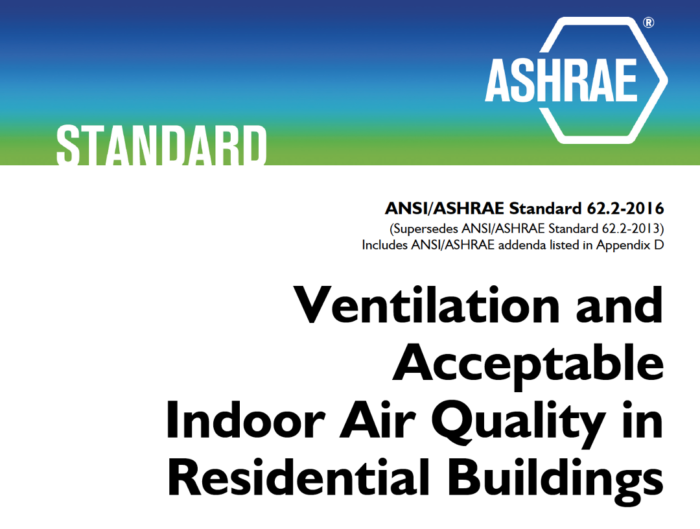




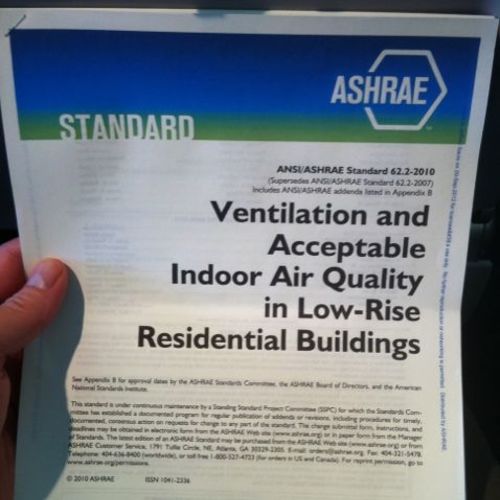
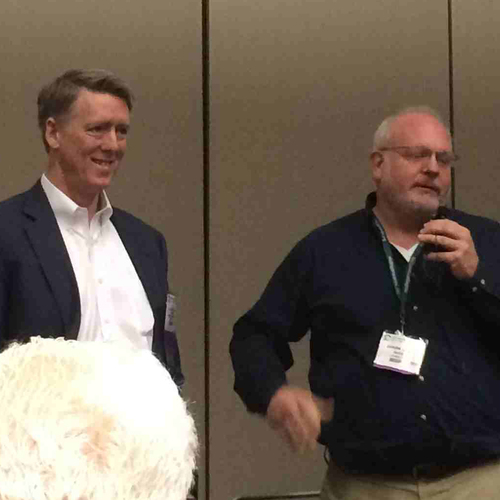
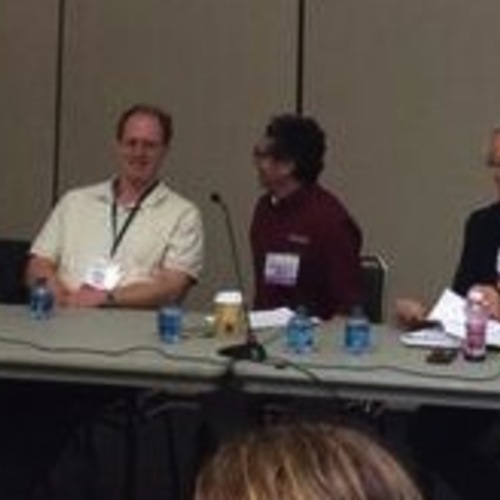
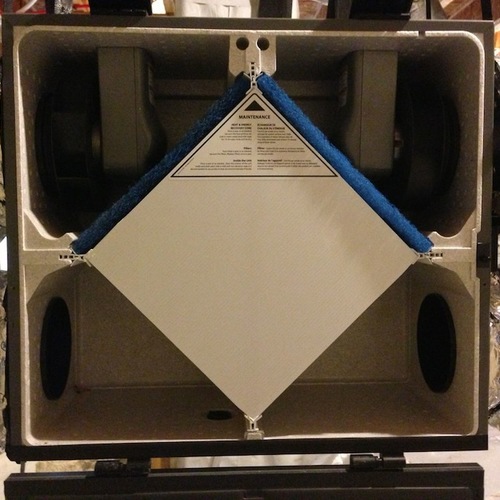






7 Comments
Quick question Mr. Bailes.
Quick question Mr. Bailes. In the "Unvented Gas Heaters" section you mention both that term and "unvented gas appliances." Is that section - and the addendum mentioned - specifically addressing gas heaters or does it also apply to gas stoves / ranges in the broader "appliance" group.
Response to Mike Simanyi
Mike, sorry for the confusion there. No, the part of the standard I was discussing relates to unvented gas space heaters (like gas logs in a fireplace). Stoves and ranges are covered by the requirements in the standard related to the range hood and other kitchen ventilation.
Passivehouse seems to follow the Ashrae thinking rather than the Lstiburek/ICC thinking. It's frustrating there is no consensus. My home varies from 48 cfm to 184 based on which formula to use (ICC, Lstiburek, 2003 Ashrae, 2013 Ashrae, or Passivehouse.) Quite a big range and hard to know what to do.
My house is 4000 sf almost-Passivehouse , we only have 2 occupants most times, and climate is super dry. So 184 seems a bit crazy. I'm wondering if I can get away with a Zehnder 160. It is their smallest, theoretically for apartments, but at 95 cfm seems like plenty.
Ever get a reply?
Ever get a reply? Fresh air at 100% in, 100 % out.. if your house is close to passive house standard, always shoot for a ERV!
I am going with the biggest Zehnder ERV, and my design is for 214 cfm including the conditioned crawl. According to some it's the right amount, others like Lstiburek say it's overkill. But I can always dial it back.
Higher capacity ERV with the ability to dial it back is great. It's more efficient and quiet running on low than a smaller unit would be, and it has the capacity to do what you need. You can monitor CO2 and other things to get a better idea of how high you want to run it.
Log in or create an account to post a comment.
Sign up Log in